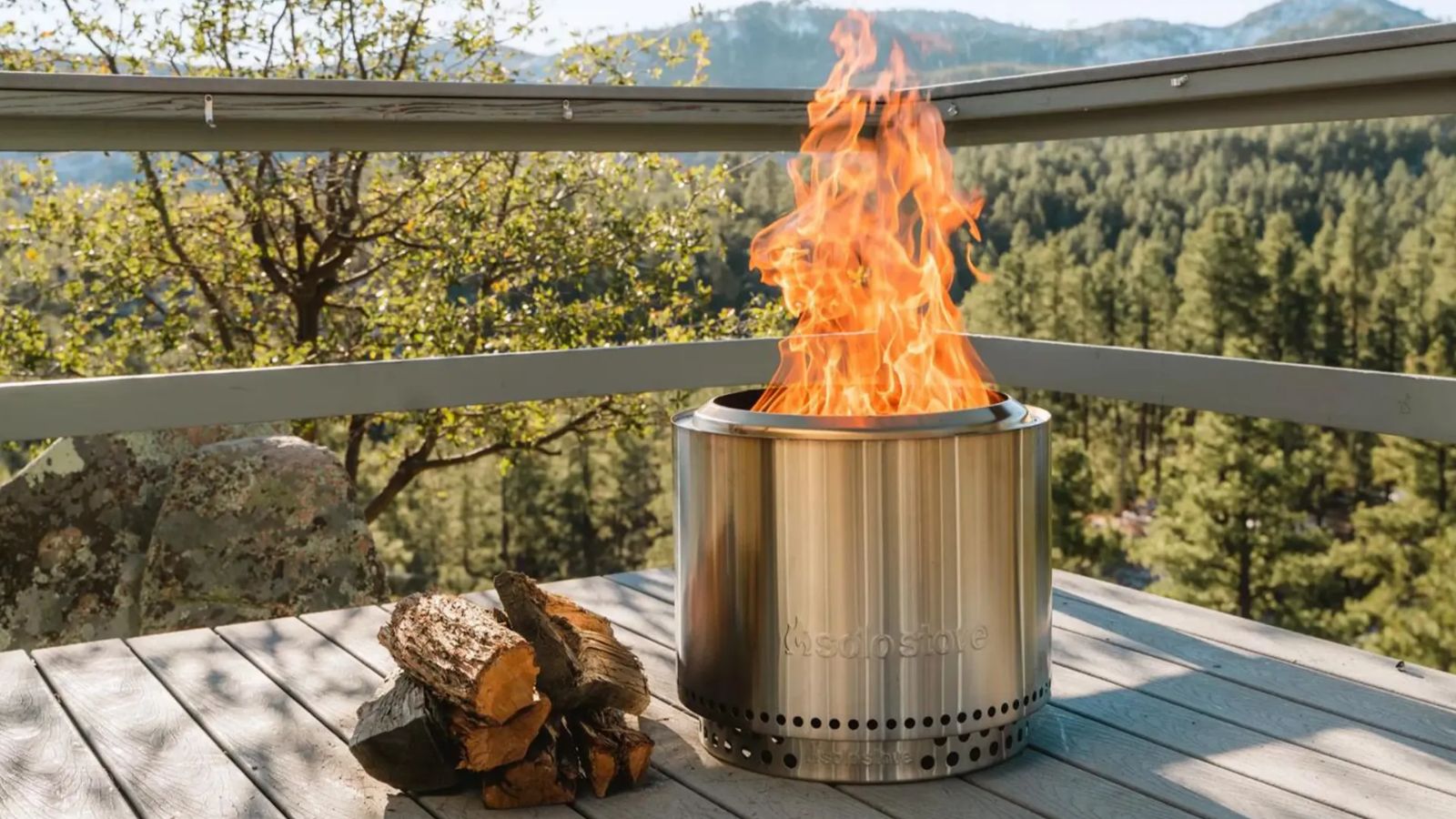
Smokeless fire pits are all over the market. They claim to offer the relaxing warmth and ambiance of a campfire without the stink and sting of wood smoke.
But while there's a lot of fanfare - including a viral Snoop Dogg campaign - there is little information about how these fire pits work. Smokeless fire pits hugely reduce the amount of smoke produced in a wood fire. If you have breathing difficulties or simply dislike the smell of wood smoke, they can be a smart investment. However, they are not entirely smokeless.
I spoke to an expert fire pit designer about these fire pits and found that the big marketing claims are not quite what they seem. This is all you need to know about smokeless fire pits.
How do smokeless fire pits work?
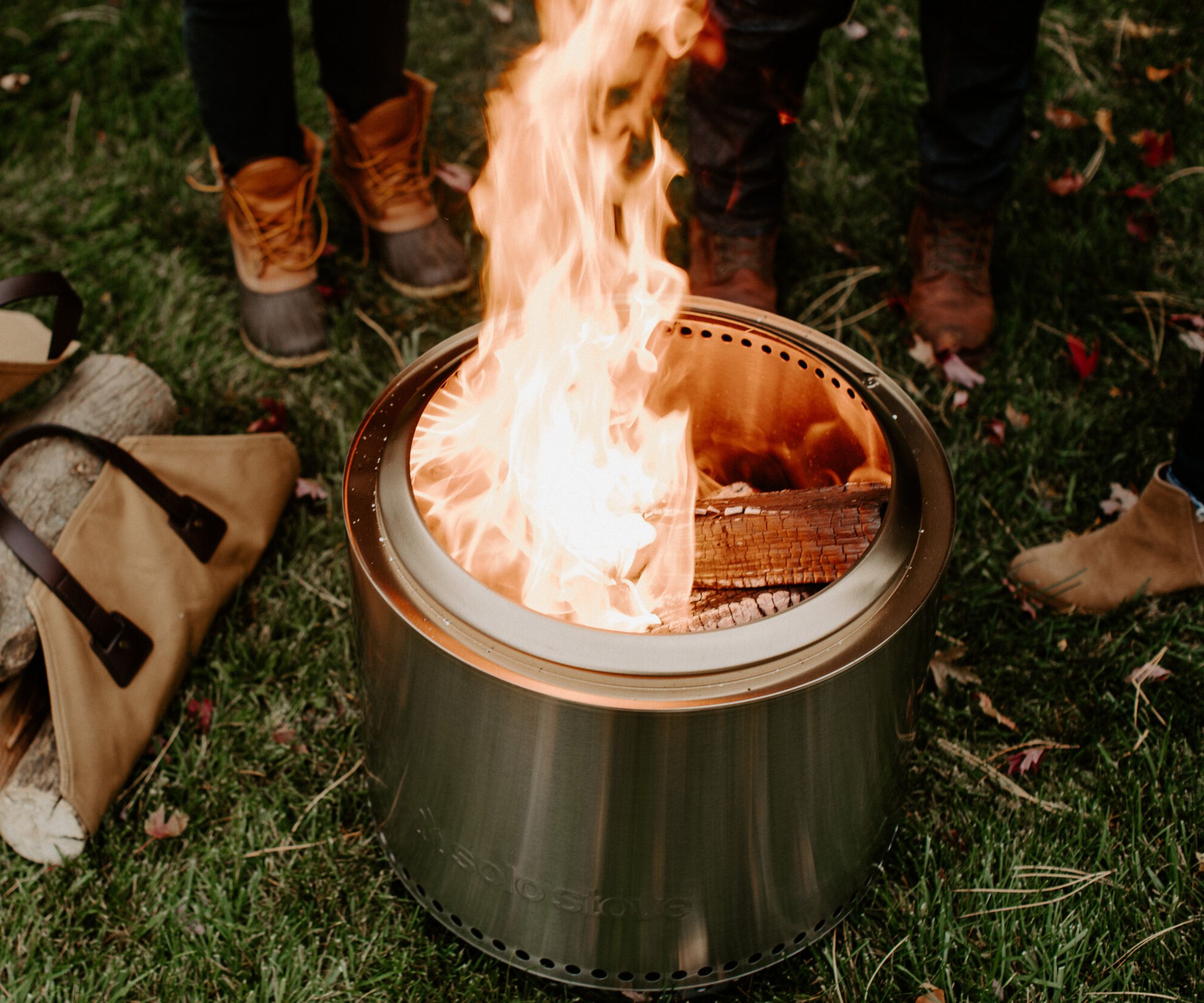
Smokeless fire pits claim to be completely smoke-free and attempt to do this with a clever double-wall structure.
Fire pit expert Eric Tamminga says, 'Smokeless fire pits use a double-wall structure with strategically placed vent holes that allow for better airflow. Air is drawn into the base and heated as it moves between the double walls.
'This preheated air is then reintroduced at the top of the fire, creating a secondary combustion. The secondary combustion burns off most of the smoke particles that would otherwise be released into the air.'
This results in a cleaner burn with much less smoke. However, that doesn't mean there's no smoke at all.
Are smokeless fire pits really smokeless?
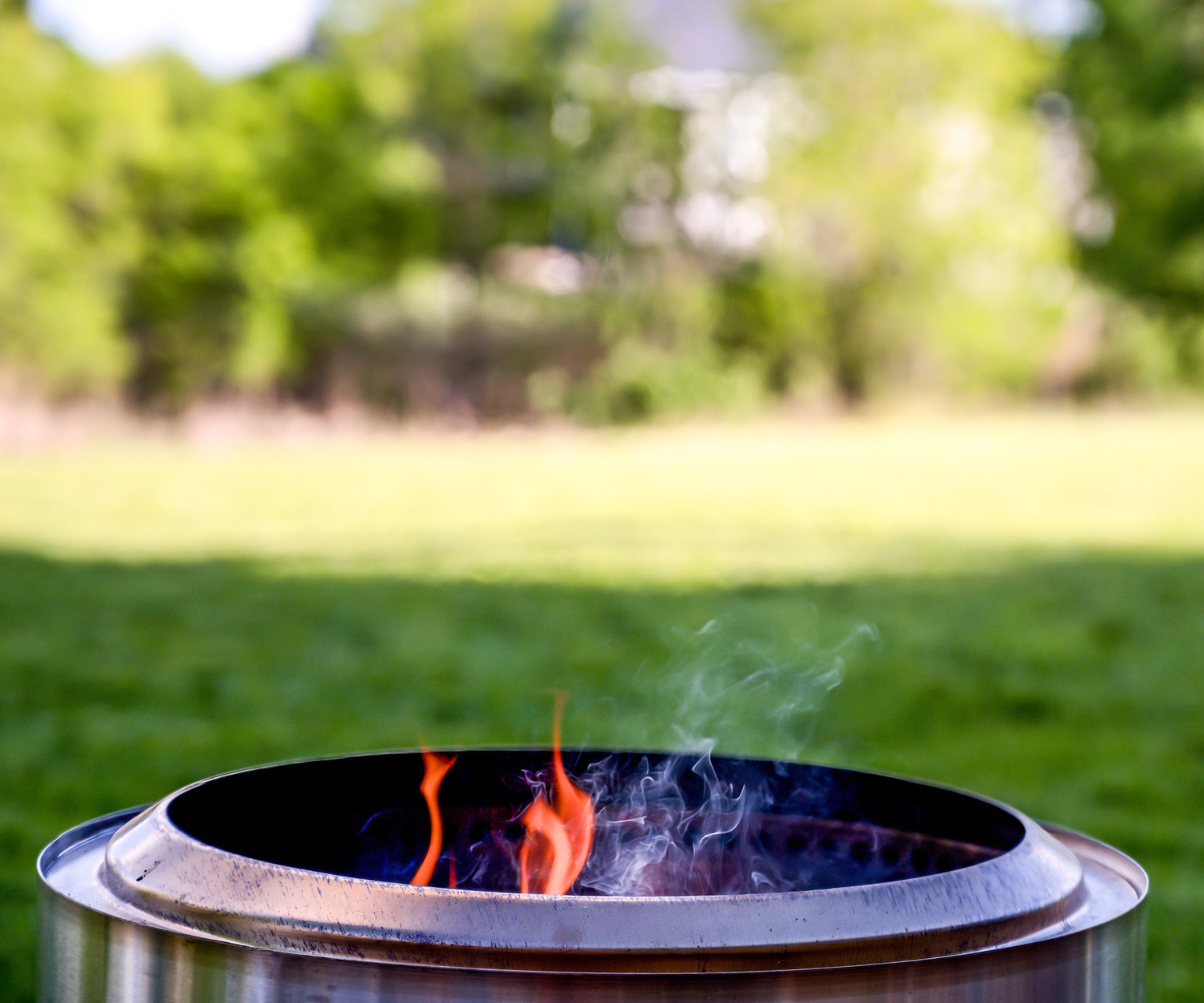
The close-up shot above shows a little smoke rising from a smokeless fire pit. Unfortunately, there's no such thing as a wood-burning fire pit that doesn't produce any smoke at all.
Eric told me, 'No smokeless fire pit is completely smokeless, but they significantly reduce the amount of visible smoke produced compared to traditional fire pits.'
He adds 'While some smoke is inevitable due to the combustion of organic material, the design and airflow mechanics of smokeless fire pits minimize smoke by improving the combustion process, making it more efficient.'
So while smokeless fire pits aren't entirely smokeless, they produce much less smoke than traditional fire pits.
For a smokeless fire pit on a budget, try this Black + Decker pit. Is uses the same mechanism as the Solo Stove but is hundreds of dollars less expensive.
Smokeless fire pits have a bad reputation for looking a little boring. This huge fire pit from Breo is designed to solve that problem, with an industrial Corten-steel structure perfect for standing up to the elements.
Are smokeless firepits better than gas fire pits?
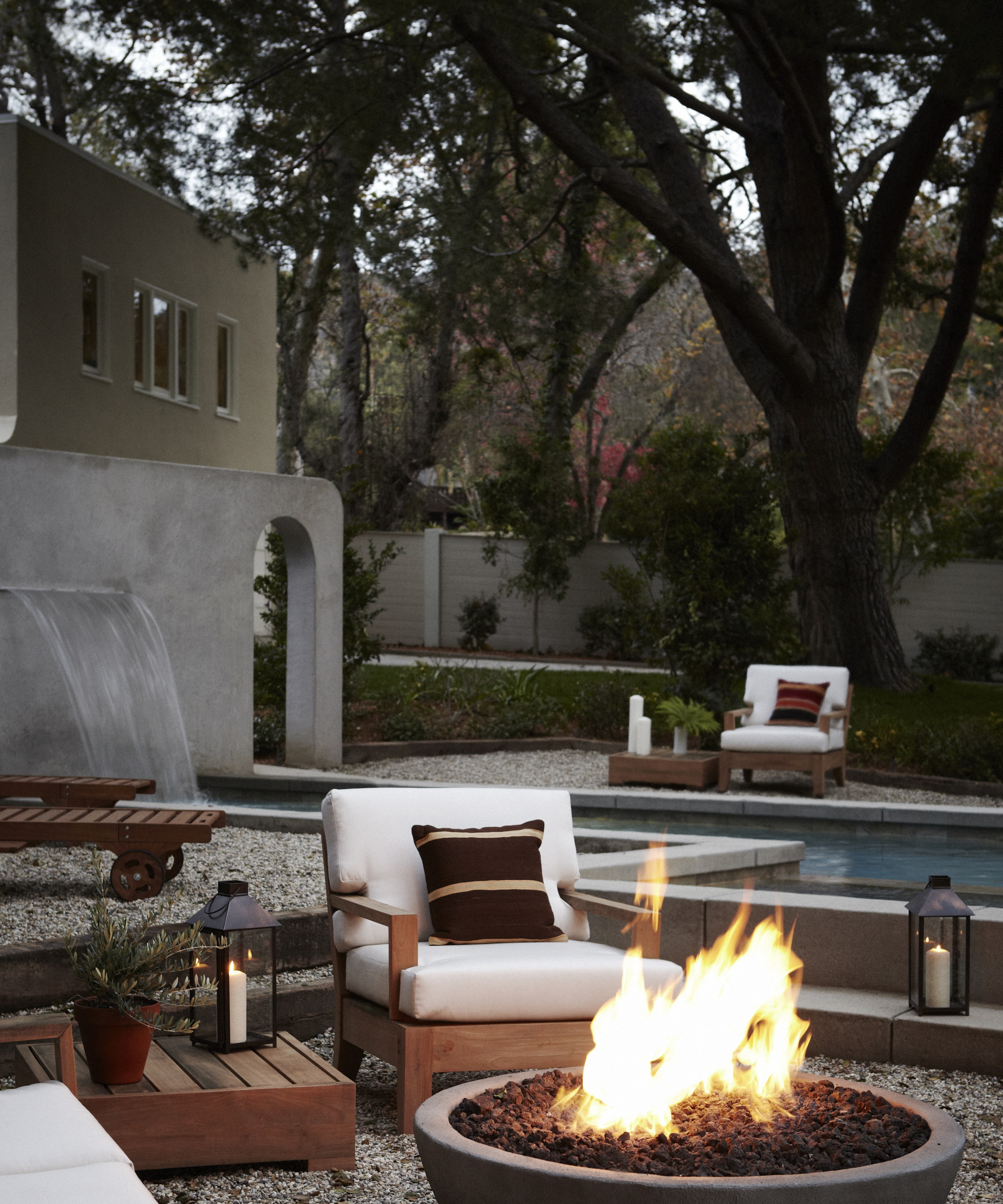
Because smokeless fire pits aren't completely smoke free, lots of people wonder if it's worth buying a gas fire pit instead. These don't create any smoke, so they seem a good option if you have breathing difficulties or dislike the smell of wood smoke.
However, there are some drawbacks to gas fire pits to consider. Gas fire pits aren't quite as cozy as smokeless fire pits. With smokeless fire pits, you get the relaxing sound of wood crackling popping in the fire. There's little ambiance with a gas fire pit - it's essentially like sitting next to a stove.
On top of that, gas fire pits have ongoing costs. Eric Tamminga told me 'Another downside of gas fire pits is the ongoing cost - replacing propane bottles or plumbing in a natural gas line is generally more expensive than buying firewood.'
This inexpensive propane fire pit table has cup holders built in, perfect for entertaining.
For a sleeker gas fire table, try a concrete table like this. UV resistant, it won't rust if you leave it in the rain.
While gas fire pits are expensive, there are still opportunities to save a little money. Some fire tables come as outdoor furniture sets, offering chairs and fire tables in a single bundle.
What are the downsides to smokeless fire pits?
Smokeless fire pits can be great, but they aren't perfect. Not only are they not 100% smokeless, but their clever construction has a couple of downsides.
Eric says 'While smokeless fire pits are very efficient and create a lot of heat rising out of the top of the firepit, they do not provide much radiant heat outwards. The same feature that enables them to burn so well - the double-walled sides - insulates them from the people gathered around.'
This means smokeless fire pits are cooler than traditional fire pits. Eric says, 'It's the same principle as a thermos mug, hot coffee inside is insulated from your hand. This makes smokeless fire pits a great choice when it's hot outside, but in the cooler fall evenings, a traditional fire pit will serve you better, albeit with a small amount of smoke.'
If want a wood-burning fire pit, this is a good value option. It has a poker and a spark screen to keep you safer from wayward embers.
This simple fire pit is great for reducing smoke. It has lots of holes in the side, so it's well-ventilated and creates less smoke.
Traditional fire pits tend to be better-looking than smokeless and gas models. It's a little expensive, but this laser-cut frond design will look great in any garden.
How can I reduce smoke in a regular fire pit?
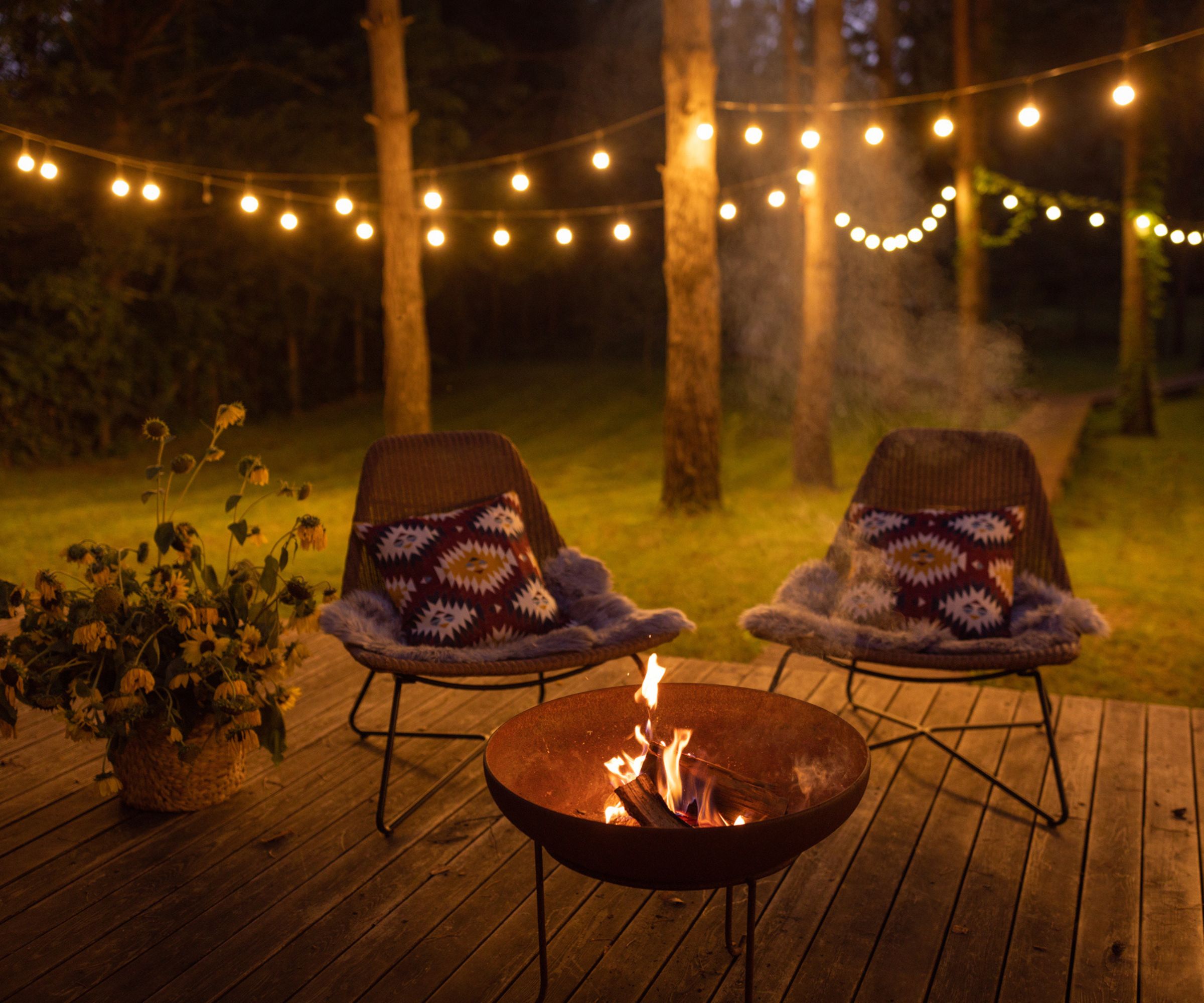
All of this means that it might be wisest to stick to a traditional fire pit. These can produce a lot of smoke, but Eric gave me some tips to reduce it.
The first is to make some changes to your wood. Make sure you use dry, seasoned wood. 'Moist or green wood creates more smoke because it doesn't burn efficiently. This is the most important factor when it comes to efficient burning.' On top of that, consider the species of wood that you're burning. Eric says 'Avoid burning softwoods. Hardwoods like oak or maple burn more cleanly than softwoods like pine, which contain more resin that can produce more smoke.'
His second tip is to optimize airflow. 'Make sure your fire pit has good ventilation to allow oxygen to reach the fire, which helps it burn hotter and cleaner.' Lots of the best fire pits have holes in the bottom to improve their efficiency. He also suggests using a fire pit grate, because 'Elevating the wood can increase airflow and improve combustion.'
FAQs
Can you use a smokeless fire pit inside?
Never use a smokeless fire pit inside. While they produce less smoke than a traditional fire pit, they still produce smoke, which poses a significant inhalation and fire risk indoors.
Fire pits of every type aren't the only way to heat your space. It's also worth weighing up fire pits vs patio heaters. Patio heaters don't produce any smoke, so they could be a better choice for heating under gazebos and patio umbrellas.







